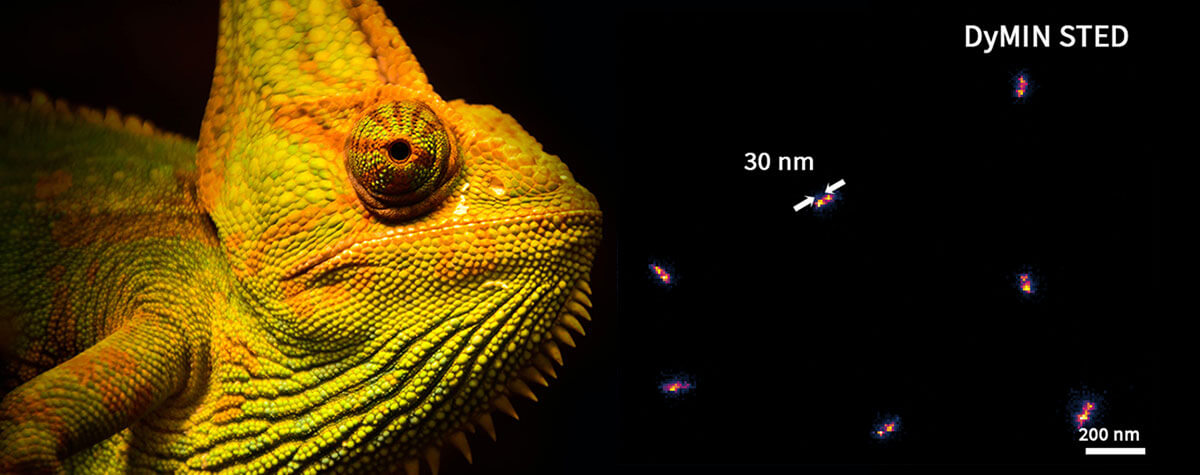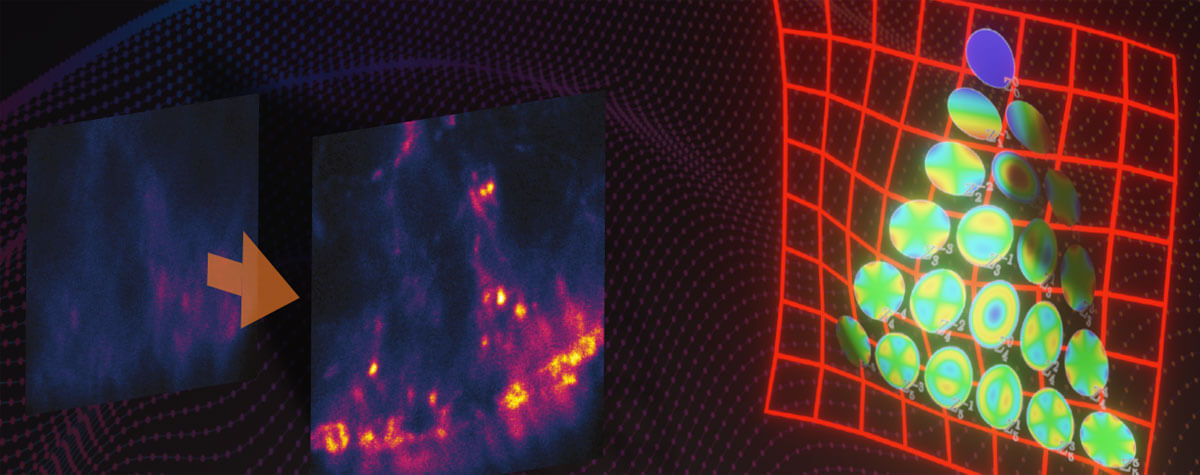Every technique that allows to observe cells is more or less invasive and fluorescence microscopy is no exception. Many imaging situations profit from a reduction in light dose as provided by FLEXPOSURE adaptive illumination. Details >
Knowledge Base
Have you ever wondered how superresolution microscopy works? What’s the difference between STED, STORM, and MINFLUX? What is “resolution” and what is a “PSF”? What is so special about the STEDYCON? Read on to find out.
If you have any suggestions, questions or ideas for our knowledge base, we would be very happy to hear from you.
ContactEverything about microscopes, dyes, and superresolution
All
#2photon
#aberrationcorrection
#adaptiveillumination
#adaptiveoptics
#antibody
#arraydetection
#basicprinciples
#biology
#comparison
#confocal
#deformablemirror
#diffractionlimit
#donut
#ExM
#fluorescence
#immunofluorescence
#labeling
#laser
#lightmicroscopy
#livingcells
#MATRIX
#MINFLUX
#modules
#nanobody
#nanometer
#optics
#PAINT
#PALM
#resolution
#selflabelingproteins
#SMLM
#STED
#STEDYCON
#STORM
#superresolution
#TEM
#tracking
#virology
#widefield
MATRIX STED is the next level of STED microscopy – combining superior resolution with outstanding signal quality and clarity. Details >
Ideal imaging conditions are often compromised by imperfections in the optical path. These can severely compromise a microscope’s performance, unless they are eliminated by RAYSHAPE's deformable mirror. Details >






